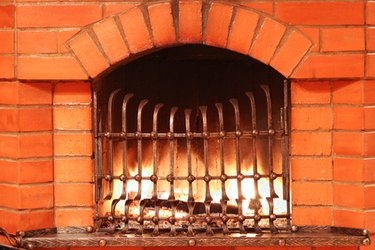
The hearth is considered by many as the true center of any home. Prior to the advent of modern heating and cooking systems, fireplaces were central gathering spots for family activity as they were places to get warm and prepare food. However, fireplaces are not without their risks. With the introduction of fire into homes with many combustible elements, proper construction of the firebox and especially the hearth are essential. For this and other reasons, some choose to raise the hearth off the floor, to further distance the mouth of the fireplace from the wood or fiber coverings on a floor.
NFPA
Video of the Day
The organization that sets the standards for fireplace construction is the National Fire Protection Association (NFPA). This organization is responsible for establishing the requirements for issues such as the minimum depth of a firebox, the depth of a hearth and the draw of a flue. While there is no specific height requirement or restriction for a raised hearth, there are specific material requirements, all relating to fire safety.
Video of the Day
Construction
According to some builders, raised hearths may actually be the easiest to construct. Says Hearth.com: "as the name implies, they are built on top of the existing floor structure, and can be as simple as a stack of cement board, or other noncombustible board as needed to reach the required R-value, covered with a layer of tile or other noncombustible material for appearance." The R-value, according to the Ceramic Tile Institute of America, "is a measure of a material's resistance to heat transfer." Different materials have different R-values, and no material used may exceed the R-value as prescribed by NFPA.
Materials
Cement board, also known as wonder board and ceramic board, has very low R-values, making them acceptable insulating materials meeting the requirements for a raised hearth. However, they are not aesthetically pleasing materials. Therefore, the challenge is to find materials to cover these with that also have acceptably low R-values. Fortunately, wonder board and ceramic board make excellent foundations to which tile and stone can be mortared. Stone and masonry, in addition to meeting the requirements as acceptable cladding materials for a raised hearth, offer additional benefits as described by the Ceramic Tile Association of America: "Masonry conducts heat well and, due to its large mass, stores and emanates heat efficiently back into the living space."